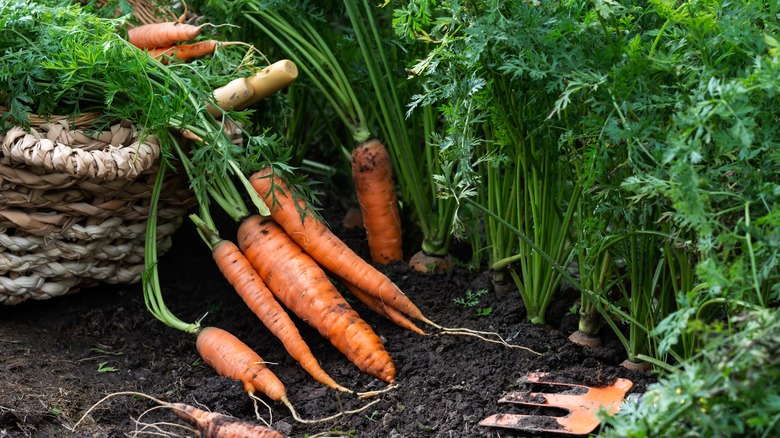Are Carrots Naturally Orange? Despite What Some Say, They Are
There are a few half-truths surrounding a certain subterranean vegetable, if you carrot all. One is that eating carrots will give you better night vision or eyesight. This can be traced to the Second World War when the British convinced the Germans that the accuracy of British pilots' airstrike at night is due to their carrot consumption, when in fact the British Royal Air Force developed radar technology. This myth probably lives on because parents use it to convince their kids to snack on always-wet baby carrots.
Second, is the persistent idea that carrots were white or purple until Dutch farmers began to develop and cultivate the orange varieties in the 1600s as a mark of respect for William's House of Orange. This sounds plausible since the color orange is closely linked to all things Dutch. But as John Stolarczyk, curator of the World Carrot Museum explained to Live Science, "there is no documentary evidence that the Dutch invented orange carrots to honor their royal family."
Before we can conclude that carrots are naturally orange after all, we should look at how carrots have evolved.
The orange color in carrots are natural indeed
Cultivated carrots originated in modern day Iran and Afghanistan and were yellow and purple. So it is true that the "original" carrots were not orange. These domesticated carrots were later split into two main classes: the Asiatic group which spread to central and north Asia as well as Japan became red in color.The Western group spread to Europe and America and are characterized first by yellow and later by orange root color.
So how did that change happen? Was it a natural reaction to the change in climate and topography or was it a deliberate action by farmers? The truth is somewhere in between. As The Economist reports, scientists believe early farmers grew colorful carrots unintentionally, and then continued the practice more purposefully to differentiate them from wild ones. There is evidence that the purple and yellow varieties have been around for 1,100 years followed by the modern orange version 600 years later thanks to selective breeding.
But the important point is that it would be impossible for farmers to cultivate the orange carrots if it was not already a natural occurring color in carrots. As Philipp Simon, a research geneticist and lead scientist for the U.S. Department of Agriculture's Agricultural Research Service carrot improvement project, told USA TODAY, the most likely explanation for orange carrots is that a carrot grower somewhere first observed orange carrots and decided to produce seed on it and grow it again.
There is no such thing as the best carrot
Irrespective of its origin story, the best way for a fruit or vegetable to remain "in demand" is to be either nutritious, tasty, or both. Carrots' bright orange color comes from beta-carotene, which acts as an antioxidant and is converted to vitamin A in our body. The orange variety has more beta carotene compared to white and yellow carrots, which explains why we are more drawn to it and why it dominates our markets.
In terms of taste, there is a difference. Yellow carrots have an earthy sweet flavor, white carrots are relatively mild compared to orange carrots and purple carrots have a subtle peppery flavor somewhat like a mild radish. Also, carrots tend to be sweeter in the winter as a survival mechanism. It protects itself against the frost by converting its starch into sugar which lowers its freezing point and prevents ice crystals from forming inside the carrot.
Because of this, the idea of which is "the best" carrot is relative and depends on what you buy, when you buy it and how you plan to use it. An evergreen tip is to look for firm, plump carrots without rootlets (little strings on the bottom). Carrots also lose moisture through their leafy green tops, so if you buy it this way, remove the tops before storing it.


